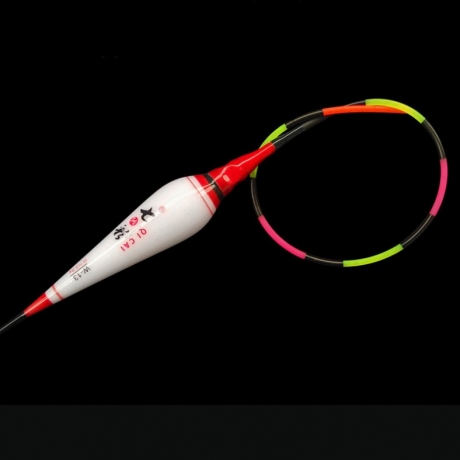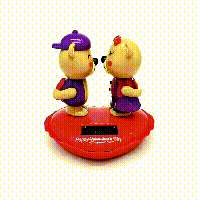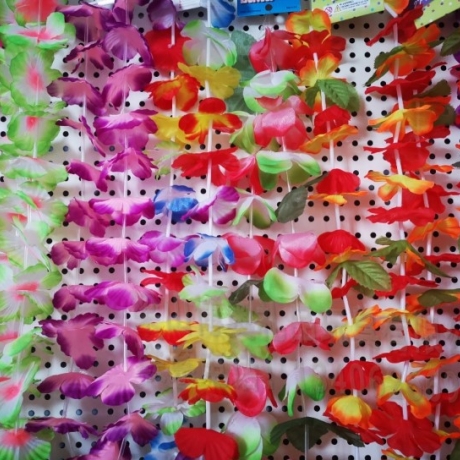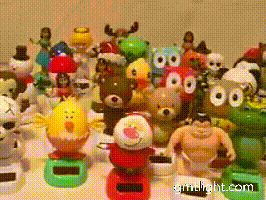What kinds of 3D printing wire materials? How to select 3D printing wire materials?

3D printing wire is mainly used in fdm 3d printer. FDM is the most commonly used printer on the market. FDM printer supports consumables of various materials. What about the performance, advantages and application fields of these consumables? Mr. Wang, an expert in gmtlight 3D printing, explains some commonly used consumables for you.
PLA (Polylactic Acid)
PLA (polyactic acid) plastic is one of the two most popular FDM 3D printing materials (ABS).
Due to its wide range of applications and convenience, this 3D printing material is listed as the preset application by most FDM printers. The advantages are as follows:
1. PLA plastic is widely used in various fields, because it has no odor (or light sweet taste) and is not easy to curl.
2. Without heating plate, the finished product is hard.
3. PLA plastic is one of the biodegradable environmental protection materials, which is derived from the mixture of corn starch and sugarcane, which meets the food grade and biodegradation standards.
There are many colors to choose from.
PLA printing parameters:
1. Nozzle temperature: 190-230 ° C
2. Heating plate temperature: 0-75 ° C (no heating plate can be pasted with blue tape)
ABS (Acrylonitrile Butadiene Styrene)
ABS (acrylonitrile butadiene styrene copolymer) is a kind of commonly used plastic material, and it is also a very good choice of 3D printing material. The characteristics are as follows:
1. ABS plastics have high strength and toughness
2. It can withstand the temperature slightly higher than that of PLA at about 80 ℃,
3. The cooling ABS is more flexible and toughness than PLA.
4. There will be smell when printing.
5. ABS is not resistant to UV, sunlight will make it decompose and shrink, so please avoid using it in direct sunlight.
Printing parameters of ABS:
1. Nozzle temperature: 220-260 ° C
2. Heating plate temperature: 95-110 ° C

TPE (Thermoplastic Elastomer)
TPE is a thermoplastic elastomer material, printed like a soft rubber 3D printing material. The characteristics are as follows:
1. TPE 3D printing materials can make flexible and resilient parts, such as plug, belt, spring, telephone case and so on.
2. The extremely flexible and elastic 3D printing materials make your 3D printing products very soft, which is different from the common ABS and PLA.
3. TPE 3D printing material is recommended to be equipped with near end feeding 3D printer; if remote feeding 3D printer is used, it is necessary to slow down and match with 2.85mm wire diameter.
3D printing parameters of TPE:
1. Nozzle temperature: 210-225 ° C
2. Heating plate temperature: 20-50 ° C
metals (containing metals)
Among these special 3D printing materials, metal consumables (such as bronze, red copper, steel, stainless steel), please note that they are not completely metals, but materials mixed with a small amount of metal.
This kind of material can print works that are very similar to metal!
1. The wire rod contains a certain proportion of metal powder (about 80%), and the finished products printed by 3D printing will emit a shiny metallic luster after being treated with sandpaper and steel velvet.
2. The appearance and casting are the same, and the texture is more outstanding than any 3D printing materials on the market, which can be said to stand out from the crowd!
3. metal consumables are about 3 times more important than PLA consumables,
4. Many people will ask whether metal wire can conduct electricity? The answer is No.
3D printing parameters of metals:
1. Nozzle temperature: 190-210 ° C
2. Heating plate temperature: 20-60 ° C
Carbon (carbon fiber)
If you want 3D printing products to have high strength, hardness, light weight and easy to print, then carbon fiber 3D printing material is your first choice!
The characteristics of carbon fiber materials are as follows
1. Adding carbon fiber into PETG to strengthen the rigidity
2. Perfect 3D printing material with high hardness, low shrinkage, high heat resistance and lightweight texture.
3. Easy to print. With your desktop 3D printer, you can print carbon fiber remote control cars, aircraft, product models, etc.
4. Pay special attention to the abrasive property of carbon fiber when using this wire rod: carbon fiber will accelerate the loss of brass nozzle more than common wood like material, so we recommend using stainless steel nozzle to print carbon fiber material.
Carbon fiber 3D printing parameters:
1. Nozzle temperature: 240-260 ° C
2. Heating plate temperature: 60-70 ° C
Wood (wood appearance material)
Wooden furniture always brings a noble and elegant atmosphere, wooden decorations are more of a retro nostalgic feeling, it's time to print your own planned wooden art works with 3D printer!
Wood like 3D printing material features:
1. Add wood fiber 3D printing material into PLA, which is as easy to print as PLA.
2. The smell and appearance are similar to wood, and some wires will change color with the printing temperature and speed of the nozzle.
3. Because the wood fiber in the imitation wood thread is thick, it is recommended to use a nozzle with a diameter of more than 0.4mm to reduce the risk of blockage.
3D printing parameters of wood like materials:
1. Nozzle temperature: 195-220 ° C
2. Heating plate temperature: 20-60 ° C
Nylon
The 3D printing materials used in the industrial field must have the characteristics of high strength, wear resistance, low friction coefficient, etc. General ABS plastic may not meet the needs, then you can try nylon!
1. High strength, high durability, high temperature resistance and low friction coefficient, which is the most suitable for making gears and mechanisms!
2. Like injection molded nylon, 3D printed nylon products can also be colored with dye.
3. It should be noted that the nylon wire itself has high water absorption. When it is not used, it should be dried and stored, for example, in a moisture-proof box, or in a sealed bag together with the desiccant, so as to maintain the quality.
Nylon 3D printing parameters:
1. Nozzle temperature: 245 ° C
2. Heating plate temperature: 30-65 ° C
PC ( Polycarbonate)
PC polycarbonate 3D printing material is the highest strength and durability 3D printing material on the market. The characteristics are as follows:
Excellent toughness: with similar rigidity, PC Max has better toughness than other 3D printing materials, making it an excellent choice for engineering use.
2. High heat resistance: PC Max offers high heat resistance over almost all 3D printing wires on the market, with a temperature resistance of 110 ° C.
3. Easy to print: PC material used to be a special material only for industrial FDM models, while pc-max greatly reduced the threshold. With moderate printing temperature and low warpage, desktop 3D printers can also master it.
4. Excellent mechanical strength: in almost all deformation tests, pc-max has better mechanical strength than ABS and PLA.
5. Easy post-treatment: it can easily pass through sandpaper post-treatment to make the finished product have smooth surface; it can also be painted and colored.
6. Outstanding quality: strictly carry out eight quality control levels to ensure that pc-max can make reliable and accurate objects every time.
PC 3d printing parameters:
1. Nozzle temperature: 250-270 ° C
2. Heating plate temperature: 80 ° C
PVA (water soluble consumables)
PVA (polyvinyl alcohol) is a water-soluble 3D printing material. It is usually used as the support material of PLA plastic.
1. Using a 3D printer with dual nozzles to print PLA and PVA at the same time. PVA is used as the support material. After printing, the object is put into hot water and wait for a period of time to obtain a perfect and beautiful object body.
2. When printing complex structural models, such as ball bearings, gear machinery and engines, it is necessary to use this 3D printing material as support
PVA printing parameters:
1. Nozzle temperature: 190-200 ° C
2. Heating plate temperature: 20-60 ° C
Graphene conductive
Conductive 3D printing material is made of PLA and graphene.
At the same time, it has the advantages of easy printing and very low volume resistivity.
With this wire, you can use 3D printer to print integrated circuit and conductive components. It is the most perfect 3D printing material for engineers who want to combine with electronic circuits!
Conductive materials can print various components, such as potentiometers (variable resistors), LEDs, capacitive touch sensors, etc.
Telecommunications, hospital equipment, medical equipment, housing and packaging, aerospace and automotive industries.
Printing parameters of graphene conductive wire:
1. Nozzle temperature: 190-220 ° C
2. Heating plate temperature: 50 ° C (not necessary)
NGEN (Co-Polyester)
NGEN is a 3D printing wire developed by amphora am3300, a polymer researched by Eastman chemistry,
Amphora am3300 is a styrene free wire rod, which is especially suitable for 3D printing and flexible objects with larger working temperature range.
The composition of PETG is similar to that of PETG, but it has better temperature resistance and toughness than PETG, and has better melt fluidity than other polymers under low temperature printing,
It can print a wide range of nozzle temperature, reliable printing quality and reduce waste.
High quality wire, good appearance performance, excellent hanging ability, large printing temperature range and high transparency are very suitable for creating a 3D printing material for durable objects.
Printing parameters:
1. Nozzle temperature: 220-240 ° C
2. Heating plate temperature: 75-85 ° C
Gmtlight can provide the above wires, some of which are completed by our own production workshop or jointly produced with other peers. If you have any questions, please email to sales@gmtlight.com




